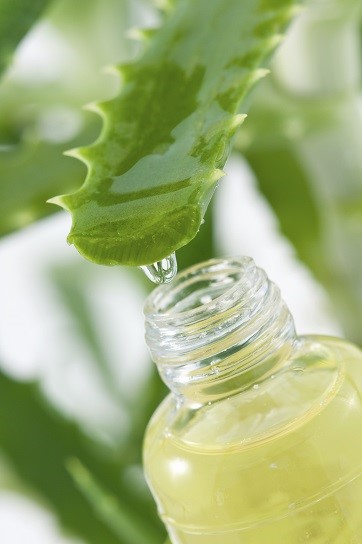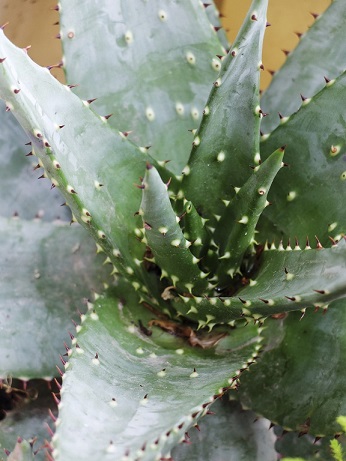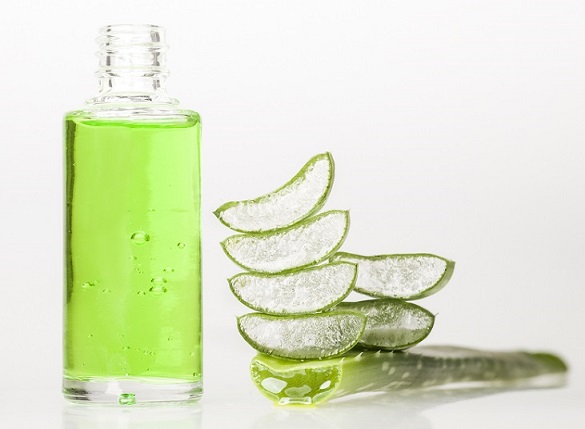 Over the last 10 years, it’s become near downright proven that aloe vera clears acne. Few other topical treatments have as many fantastic studies to their name, calming inflammation, increasing antioxidants, the list goes on.
Over the last 10 years, it’s become near downright proven that aloe vera clears acne. Few other topical treatments have as many fantastic studies to their name, calming inflammation, increasing antioxidants, the list goes on.
However, for all we know, before the world was so interconnected, aloe vera’s acne powers could have been proven dozens of times separately. The Greeks, the Egyptians, and Ancient Chinese dynasties all loved aloe vera for skincare. Just like honey or rose oil, it surfaces repeatedly in dusty old textbooks, and that history is what we will discuss today.
We don’t know everything – there are vast blank spaces in the records. 2000 years ago, there might have even been an aloe-filled Roman town when acne was completely extinct. If only they’d written their discovery down, pimples might have been a long-forgotten myth by today.
Sadly, that didn’t happen, but history has numerous fascinating secrets to reveal about aloe vera. Of course, the plant is millions of years old, but we will ignore any bears, camels, and T-rexes that used aloe vera, and instead start with the earliest human history:
Ancient Egypt
The first rock solid proof of humanity using aloe vera is a matter of debate. In a dark, treasure-filled Egyptian temple somewhere, there could easily be 8000 year old textbook which we haven’t discovered (probably guarded by a mummy’s curse), but a common claim is an Egyptian carving dating back to 4000BC. Aloe vera was supposedly painted in intaglio ink in an ancient temple fresco, but some historians doubt the actual identify of the plant.
Therefore, the oldest official record were Sumerian clay tablets dating back to 2100BC. Found in the city of Nippur in the late 19th century, King Ashurbanipal and his cohorts supposedly used aloe vera for digestive healing and as a shield against spoiled and stale food.
The aloe vera was identified by the tablet’s faded description: “these leaves resemble knife sheaves“. They also used aloe vera for detoxification, although it differed slightly to today’s liver flushes: the Sumerians thought that aloe vera could cure demonic possession!
The next official documentation happened 600 years later (1550BC), in the famous Ebers Papyrus. This Egyptian medical text lists 12 different aloe vera formulas, including for wounds and diseased toes.
Ancient Egypt is generally a treasure trove of stories; the Mahometans viewed aloe vera religiously and hung the plant over their doorways to ward off slander and evil. The classic (though unproven) tale is that Nefertiti and Cleopatra, two of the most stunningly beautiful woman in recorded history, had aloe vera pots specially delivered to their palaces, even bathing in it.
Supposedly, aloe vera was added to a pharaoh’s coffin to guide him into the afterlife, and planted around pyramids and on the path to the Valley of the Kings. When the fresh aloe bloomed, the deceased Pharaoh had successfully “reached the other side”. Egyptians used aloe vera for wounds, arthritis, lung diseases, burns, parasites, and even immortality potions. The green gel dripping from the leaves was called “the blood” and legend states that mummies were embalmed in it.
Ancient Greece
 Flash forward 1000 years and we have perhaps the most famous legend of all: Alexander the Great (born 356BC).
Flash forward 1000 years and we have perhaps the most famous legend of all: Alexander the Great (born 356BC).
Alexander was a man of many wars, and one day, during the siege of Gaza in 330BC, he caught an arrow in the leg. Trekking home through the Libyan desert, the wound stubbornly refused to heal. Plagued with pain, Alexander reached the oasis of Siwa where he met a priest holding an aloe vera lotion, sent by his mentor Aristotle.
To Alexander’s amazement, his wound healed after only two weeks. Henceforth, he brought wagons of aloe vera with him in every battle, to instantly treat fallen soldiers.
Later, Aristotle persuaded him to dispatch a naval force to conquer the island of Socotra (in the northern Indian Ocean), solely to capture its bountiful supplies. Some argue that Alexander actually coveted Socotra’s precious myrrh, with its painkilling properties. However, this island was undeniably the hub of aloe vera trade in 500BC, trading to China, India and Arabs alike, so the legend could easily be true.
Meanwhile, Hippocrates recommended aloe vera for hair loss, tumours, dysentery and stomach ache. Halfway across the world in India, aloe vera was being traded as early as 600BC. These travelling Arabian merchants, who called aloe vera “the desert lily”, devised a revolutionary new technique: stepping on the leaves with their bare feet to separate the green gel from the inner rind. The ground pulp was placed in goat skin bags and left to dry in the fiery Arabian sun. Soon, a dry, easily transportable powder was created, making merchants richer and richer.
Around 400BC, the Chinese empire took notice too, dubbing the plant “lu-hui”. The Chinese reached the same conclusion as King Alexander, treating the wounds of fallen soldiers. They cleared countless skin problems, such as irritation, rashes, burns and lacerations, with some superstitious spirit protection thrown in. Their favoured method? Grinding up the leaves, and boiling them to create a black gel.
The Roman Empire
This is when the evidence starts coming thick and fast. The physician Dioscorides spent years travelling with conquering Roman armies under the command of Nero. From 41-68 AD, he collated his immense knowledge into the famous De Materia Medica text, and aloe vera was one of his favourites, recommended for wounds, gingivitis, hair loss, and sunburn.
Luckily, this text is still in pristine condition, locked in a museum vault somewhere, and therefore we have a direct translation. “Sprinkled on dry it heals wounds, and brings boils to a scar and represses them” and “with wine it stops the hair falling off“. One quote is particularly interesting: “it soothes rough skin, itchiness of the eye corners, and headaches, rubbed with vinegar and rosaceum on the forehead and the temples“.
Promisingly, the classic Roman recipe was a mixture with honey and rose oil. Pliny the Elder (born 22AD), another storied Roman genius, wrote in his Natural History that aloe vera could reduce sweating. He also referenced the embalming popular with Egyptians. These documents prove that aloe vera has been beloved for millennia.
What’s interesting is that adulteration has also been beloved for millennia. Dioscorides warned readers against buying counterfeit products. He warned that hard black gel was fake, soft gel was legitimate, and that crooked merchants often blended aloe with acacia and gum.
The big legend was the Essene Jews, a religious sect who existed from 200BC-100AD (approximately). According to Roman historian Josephus, they inherited the Egyptian’s knowledge of aloe vera, grew it in enriching Dead Sea salts, and ate the leaves daily to acquire an extraordinarily long lifespan of 125. The average Roman lifespan was 39 years.
The Dark Ages
Despite its greatness, not even aloe vera could save the Romans from their grizzly fate: invasion by Barbarian hordes. Around 300AD, the empire crumbled and with it, enlightenment and deep medical knowledge.
The Dark Ages had arrived, and for centuries, doctors relied on old Roman texts. Southern European villages passed the legend of aloe vera down through the generations. Around 700-800AD, the Chinese Materia Medica of the Song Dynasty was written, and with it the first official reference to aloe vera, recommended for sinus relief, fevers and convulsion in children. Legend states that the 8th century poet Lui Yu Xi was plagued by incurable eczema, until one day, a travelling merchant gave him a herbal remedy, consisting of two thirds aloe vera and one third licorice (also ancient and promising).
Things were quiet until 1100, when medical nun Hildegard von Bingen explicitly referenced aloe in her Medica text: “the juice of this plant is hot and has great strength. For strong, daily stomach fevers, one should make a plaster of aloe vera on hempen cloth. When placed over the stomach and navel, the fever will cease“. Clearly, Chinese-style theories of hot and cold, ying and yang were popular, but aloe vera’s powers were real and unmistakable.
Von Bingen also stated that “one who has jaundice should place aloe in cold water, and drink it in the morning and when he goes to bed. He should do this three or four times a day, and he will be cured“. Similarly, and these are all direct quotes: “one who has a cough should put an aloe plaster on his chest, so that he can smell the odour. The cough will cease“. It’s a mystery whether aloe vera was common, or an elitist remedy sold to kings and their aristocratic friends.
Meanwhile, the crusades, lasting from 1096 to 1271, had a ton of myths surrounding them.
Supposedly, the Christian knights on a quest to reclaim the holy land considered aloe vera to be the Muslim army’s superweapon. When the Muslims advanced into Andalusia, they planted fresh aloe crops, to move their supplies closer to the frontier. The Knight’s Templar (founded in 1119) supposedly invented the “elixir of Jerusalem”, an invigorating drink consisting of aloe vera, hemp, and palm wine, which added years to their lifespan.
Another man on an epic quest was Marco Polo (born 1254), a reckless explorer at a time when half the Earth’s map was mysterious empty spaces. In 1292, he left Cambodia and docked in Sumatra, and spoke wondrously of the apes and unicorns before his eyes. Now, those “unicorns” were actually Sumatran rhinos (or were they?), but Marco Polo also stated that “it is most fertile, aloes growing most luxuriantly“. Marco Polo also brought pots on his ships, for instant medical attention. He planted aloe vera all over the world; upon reaching China, he was disappointed to find a healthy colony already growing.
It’s impossible to know how popular aloe vera was from 1100-1300, but apparently, anyone who touched it was amazed.
Aloe vera goes west to America
 Come the 16th century, a terrible plague of locusts swarmed the Canary islands in 1559, and governor José de Sosa was shocked that even the hardy aloe leaves were ruined. The Chinese pharmacopoeia of Li Shih-Shen (born 1518) called aloe vera the harmony remedy, one with extreme therapeutic properties. Sources suggest that from 1300-1500, dried aloe vera sap became popular in England for wound healing.
Come the 16th century, a terrible plague of locusts swarmed the Canary islands in 1559, and governor José de Sosa was shocked that even the hardy aloe leaves were ruined. The Chinese pharmacopoeia of Li Shih-Shen (born 1518) called aloe vera the harmony remedy, one with extreme therapeutic properties. Sources suggest that from 1300-1500, dried aloe vera sap became popular in England for wound healing.
The biggest development, however, was aloe vera’s conquest of America.
When sailing west, Christopher Columbus had no idea what he would find; there could have legitimately been 6-headed dragons waiting for him. Therefore, he stashed his whole ship with aloe vera pots gathered on the Canary islands.
Columbus’ journal often references finding aloe (and gold, he seemed slightly obsessed) on newly discovered islands such as Cuba and Barbados. For example: “Here I came upon some aloes, and I have determined to take ten quintals on board to-morrow“. Similarly, “in the said lagoon Martin Alonso Pinzon, captain of the Pinta, killed another serpent 7 palinos long, like the one we got yesterday. I made them gather here as much of the aloe as they could find.“.
This shows two things; firstly, how highly aloe vera was valued in the 16th century, but secondly, that aloe vera may have been growing naturally in the Caribbean. Because of explorers like Marco Polo, nobody is sure where aloe vera originally grew, but the theory is the Arabian peninsula. Therefore, Columbus probably mistook aloe for a similar spiky desert shrub.
What’s confirmed is that Columbus planted aloe vera all over the New World. He preached that mankind needed only four vegetables: wheat to nourish him, grapes to raise his spirits, olives to bring him harmony, and aloe to cure him.
Even better were the Spanish Jesuit monks. These worldly do-gooders are a sect of Christianity specialising in healing, herbal medicine and phytology. It all started with the physician Paracelsus (born 1493), who wrote a letter discussing the “mysterious and secret aloe whose golden aloe juice cures burns and blood poisoning“. The awe-inspiring reputation spread to Portugal and Spain and by the 16th century, Jesuit monks were planting aloe vera in modern-day Florida, Texas, and Mexico.
Any town or monastery visited by monks was given a fresh aloe vera patch. Some monks would journey 50 miles with aloe vera to heal the sick. Travelling with Spanish conquistadors, the monks also educated the natives about its healing properties. The Maya Indians particularly fell in love, christening aloe “the fountain of youth”.
The aloe vera industry kicks off
Until 1700, the aloe vera plant joined human settlements in slowly conquering every humid corner of the western hemisphere.
In 1720, aloe vera was scientifically named for the first time, by Carl Von Linne. It was no longer that random green shrub which cures your burns when lost in a desert; it was official. The Dutch organised huge aloe plantations in Barbados, Curacao and Bonaire, and starting exported to Europe, planting the seeds of today’s mega-industry.
The poor farmers had to slash each leave off by hand, and carefully line them up in a tilted trough to extract the sap, which was boiled into a solid black mass in cooking sessions lasting all night. The first edition of the US Pharmacopoeia mentioned aloe for skincare in 1820, and it was still listed in 2010’s 33rd edition.
But a problem remained – science was still in its infancy, and nobody realised how easily aloe vera’s medical compounds disappeared. Anthraquinones, lupeol, gibberellin – all are fragile even today. Consequently, Europeans weren’t impressed with the Caribbean aloe flooding their shores.
More and more, people decided that aloe vera was just a character of myths and legends, with one exception: Priest Kneipp (born 1821), a Bavarian monk who walked a thin line between genius and madness. He almost died from tuberculous as a teenager and became a devoted student of natural medicine.
From his seat in the monastery, he encouraged his fellow Bavarian villagers to take ice baths and walk barefoot in the snow (which may actually work), but also considered aloe vera to be the pinnacle of digestive cleansers and detoxifying agents.
During World War 2, when antibiotics were discovered, aloe vera’s medicinal reputation plummeted ever further. It wasn’t total doom and gloom though. In 1886, the Japanese pharmacopoeia officially recognised aloe as a drug, dubbing it “the plant to make a doctor needless”. The classic Japanese legend is that Samurai smeared their bodies with pulp in order to expel demons before battle (although this could have been a different aloe species).
By the early 1900s, Gandhi had also become obsessed. Some other quotes may be fake, but in a letter to his biographer, Gandhi said “you ask me what were the secret forces which sustained me during my long fasts. Well, it was my unshakable faith in God, my simple and frugal life style, and the aloe, whose benefits I discovered upon my arrival in South Africa at the end of the 19th Century“. It was a popular plant in Denmark before the war; every household had a “burn plant” in the kitchen where you could slice off a spiky leaf to instantly calm burned fingers.
Aloe vera returns from the dead
 So when exactly did aloe vera take over the world? In 1968, Bill C. Coates finally achieved what no Egyptian or Roman could; he extracted aloe vera gel in a stable form, using cold-pressing.
So when exactly did aloe vera take over the world? In 1968, Bill C. Coates finally achieved what no Egyptian or Roman could; he extracted aloe vera gel in a stable form, using cold-pressing.
Furthermore, he separated the outer, aloin-containing rind from the soft inner gel. Aloe vera was finally marketable, and before he could say “I hate acne”, it was on nearly everybody’s shelf. This was the greatest leap forward of all time, the point where aloe vera spiralled into the juggernaut we all know and love.
Crafty businessmen helped out too. The first commercial farm in the US was opened in Florida, in 1912. However, nowhere was more crowded than Aruba, which quickly became called the “Island of Aloes”.
In 1890, Cornelius Eman founded Aruba Aloe, which is still in existence today, and gambled on a small, dusty patch of land. The hot and dry climate helped the shrub to expand like the Big Bang and by 1906, Aruba was the world’s largest producer. By 1920, nearly two thirds of the island was covered with aloe vera crops.
Originally, aloe vera was grown for its aloin, a laxative compound, but around World War 2, infinitely superior synthetic laxatives were invented. Aruba’s aloe industry fell into grave peril. Then a masterstroke happened: in the late 1960s, after watching locals rub aloe vera gel into their skin, company boss Jani Eman (Cornelius’ son) shifted gears towards cosmetics, creating the first aloe vera skincare giant.
From then, copycats emerged left right and centre. Another early aloe vera outfit was Collins Chemical Company, established in 1934 by C. E. Collins MD. In 1935, Collins discovered that aloe vera was miraculous for radiation burns; his research is still on the internet.
Later, a man called Bob White started a company called House Of Aloe (which eventually bought up the Collins Chemical Company) while helping Shell out with an oil pipeline in Louisiana. As a lifelong roadbuilder, he had noticed the early signs of skin cancer from constant sun exposure, yet the oilmen seemed seemed to be fine. The reason? They had discovered the secret of aloe vera while working in the scorching Middle East. White hopped on the bandwagon and his skin suddenly became armoured, convincing him of aloe vera’s powers.
Indeed, numerous oil tycoons dabbled in aloe vera; billionaire Texan H. L. Hunt owned plantations in Florida and the Rio Grande valley. The Kewanee oil company owned an aloe vera paradise on a private Caribbean island. Some argue that greedy oil tycoons were the secret to aloe vera’s success.
Urban legends are popping up even today; some claim that aloe vera was used on radiation burns after the Hiroshima bombing. Others insist that Apollo 11 astronauts flew to the moon in 1969 with a healing aloe ointment in their space shuttle. Did the US Olympic committee use aloe vera as their secret weapon in the 1976 Montreal Olympics? Some say so. If Alexander the Great’s obsession with aloe is talked about now, then in 2000 years, the Apollo 11 myth is probably the one people will remember, the first landing on the moon.
The verdict – what history says for acne
All in all, the signs are good for aloe vera banishing pimples. Skincare is a common theme, from the Romans to the US Pharmacopoeia of 1820. You have numerous conditions closely connected to inflammation – irritation, wound healing, rashes and arthritis.
Let’s say we had no studies on aloe vera at all. The history alone wouldn’t be enough to instantly recommend aloe vera, but I would definitely advise an experiment. Combine the two and aloe vera is unstoppable.
The most commonly mentioned power has to be burns, and to heal singed flesh, you need a healthy supply of collagen. In fact, aloe vera has several studies to its name supporting sunscreen protection (see here).
The mere fact that demand was so high and that merchants sold aloe in China and Japan is promising – its proves that its greatness was visible to the naked eye, without internet gurus putting thoughts in your head.
Christopher Columbus and Marco Polo loved aloe vera so much they dragged it halfway across the world. The Jesuit monks fell in love with aloe vera, and as far as I know, there wasn’t any religious aspect to it.
What’s weird is that after 3500 years, aloe vera has finally been proven to clear acne in the last 20. Some would say it’s kind of disappointing that the collective wisdom of Roman warriors, superstitious Egyptians and Bavarian monks has now been reduced to a technical scientific experiment, but Egyptians doctors probably dreamed of real proof.
It would have been interesting to see the average Socotran 2000 years ago. The island was the hub of the global aloe vera trade, so as well as being filthy rich, the Socotrans might have been walking around with permanently clear skin and permanently happy grins fixed on their faces.
Are any doubts raised by this tale? Only that pimples and acne themselves were mentioned surprisingly infrequently. Some argue that acne is only a recent phenomenon, caused by the choking pollution of the Industrial revolution, but Tutankhamen suffered from pimples. The Greeks attempted to cure acne by watching a shooting star at midnight while wiping their face with a cloth (prepare for a new internet craze).
Nevertheless, aloe vera has been beloved for at least 3500 years, and if the new acne studies are any indication, it should easily last for another 3500. The only question is whether humanity lasts for another 3500…
Thanks for reading!
